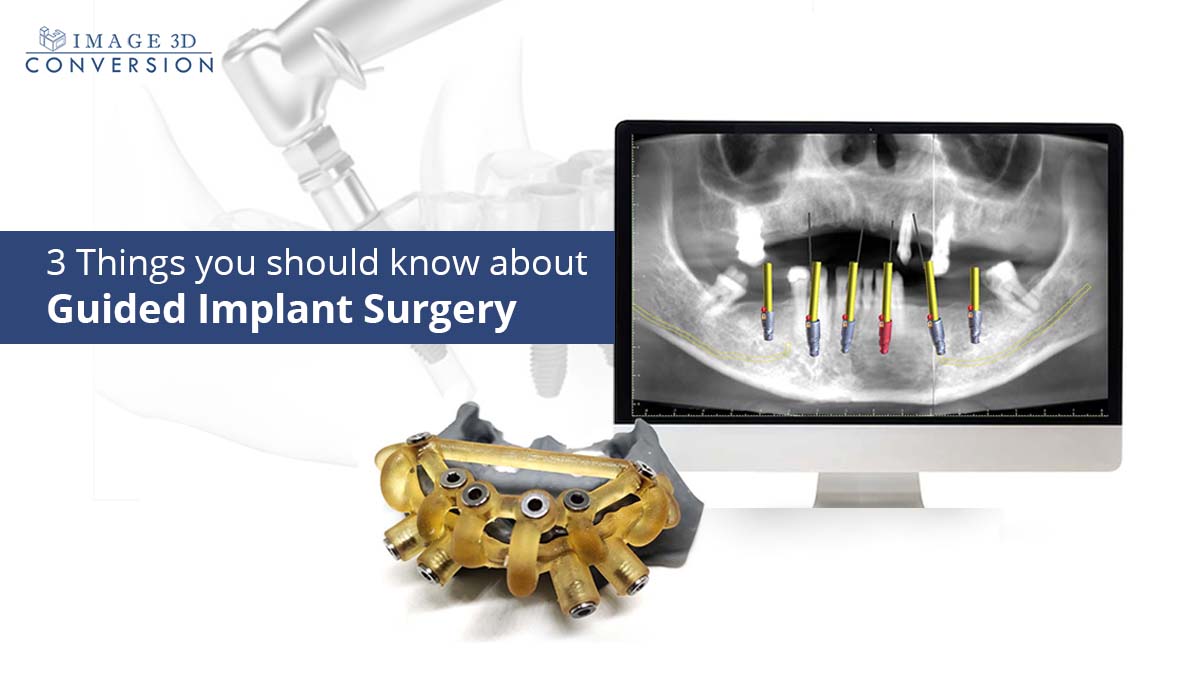3 Things You Should Know About Guided Implant Surgery

- How to Get Started with Digital Treatment Planning.
To begin Digital Treatment Planning, the dentist typically gets a cone-beam computed tomography (CBCT) scan and a digital impression. Our team at I3DC converts this to an appropriate digital format, which can be merged. It is ensured that they align perfectly so that every detail can be accounted for when we devise the surgical plan. Any challenges, such as areas of proximity to the sinuses or nerve canal, bone with questionable density, and adjacent dental structures are identified and used to create precise digital anatomical data.
Our Digital Treatment Planning specialist studies and develops a treatment plan that maximizes safety and efficiency by precisely controlling the trajectory and positioning of the implant via a surgical guide.
The Experts at I3DC review the proposed surgical plan and the final surgical plan is set in motion.
- Choosing The Right Type of Surgical Guide
Several types of surgical guides can be used during implant placement. Your selection will depend on your preferred treatment method and implant system. In turn, your choice of surgical guide influences the treatment planning process. As guided surgery allows you to plan surgery, accounting for the patient’s aesthetic concerns and clinical needs, takes prime importance.
Influencing factors include the patient’s needs, the number of implants required, whether to choose a fixed or removable prosthesis, potential tooth extractions, immediate restoration requirements, and flapless surgery appropriation.
It’s important to confirm that the components of your surgical kit brand are compatible with the implant drilling and placement protocol.
- Impact of Digital Treatment Planning and Guided Surgery in Improving the Patient Experience and Case Acceptance
The term “Surgery” in general acts as a repellent. When a doctor incorporates the digital workflow of the proposed treatment plan in the case presentation, they are likely to infer that a procedure based on such thorough diagnostic information and accounted with every safety consideration possible, is a good option to move forward with.
Furthermore, guided implant surgery benefits like minimally invasive surgical procedures, precision, less chair time and faster healing encourage patients to make a well-informed call in the right direction.
I3DC’s primary focus is working with clinicians to simplify implant surgery and help them deliver an experience that allows more patients to gain access to the life-changing benefits of implant treatment.
DOWNLOAD FREE E-BOOK
Kick start your Guided Surgery Practice.
 USA & Canada:
USA & Canada:
 UK:
UK:


Comments: